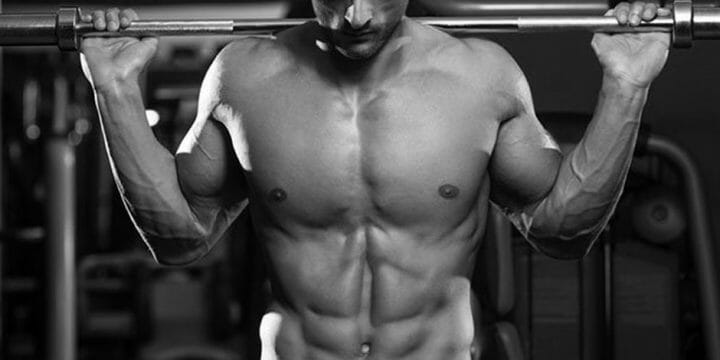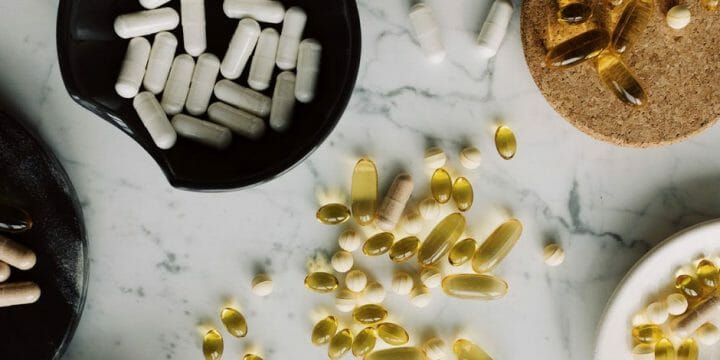Many of my fitness clients swear by pre-workouts that contain caffeine and other stimulants, believing there is no other way to get the laser focus and energy necessary for their workouts.
Others are sensitive to stimulants and look for effective non-stim pre-workouts that will give them the equivalent energy and focus.
I feel this was an important topic to research for my clients, so after reading countless online articles and consulting our dietician, I have outlined the main differences between stimulant and non-stimulant pre-workout.
Quick Summary
- To optimize workout performance, individuals choose between stimulant (stim) and non-stimulant (non-stim) pre-workout supplements based on personal preference and sensitivity to ingredients like caffeine.
- Stim pre-workouts often contain caffeine and other ingredients that can increase alertness, energy, and focus, while non-stim versions use alternative compounds to enhance performance without the jitters.
- According to a study by the National Institute of Health, stimulants can raise blood pressure and increase heart and breathing rates, which may contribute to improved exercise performance.
- Personally, considering the potential for stimulant tolerance and the benefits of non-stim pre-workouts, it seems prudent to choose a product based on one's unique health profile and workout timing.
Stimulant Versus Non-stimulant Pre-Workout
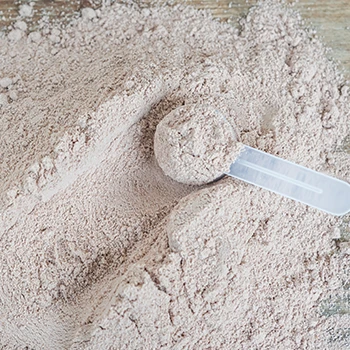
The main difference between stim and non-stim pre-workout is the stimulant content or the lack thereof, and there are many options on the market for both kinds.
Since the most common stimulant in these products is caffeine, non-stimulant pre-workout is usually aimed at those who metabolize caffeine slowly or are sensitive to it.
Caffeine is not the only stimulant to look for on the label, though. Some other ingredients you may find on the label include guarana, theobromine, green tea extract, and Yohimbe.
Stimulants increase the levels of certain chemicals in the brain, which translates to increased alertness, attention, energy, and physical activity.
Stimulants, according to National Institute of health (NIH), also raise blood pressure and increase heart and breathing rates [1].
Whether you choose a non-stim pre-workout or one with stimulants often boils down to personal preference, time of day you work out, and sensitivity.
Let’s take a look at the benefits of each.
3 Benefits of Stimulant Pre-Workouts

As previously stated, caffeine is the most common stimulant in pre-workouts, and for a good reason.
1. Improves Energy and Focus
A sudy fro the Journal of the International Society of Sports Nutrition notes that caffeine enhances exercise aerobically and anaerobically by improving focus, energy, and endurance [2].
Stimulants like caffeine block the brain’s adenosine receptors, keeping the neurotransmitter adenosine levels low. High levels of adenosine are responsible for feeling sleepy, so blocking those receptors keeps you energized and alert.
Research from ScienceDaily shows that stimulants may improve reaction time and delay fatigue, which are necessary factors in enhancing exercise performance [3].
If stimulant intolerance does not play a role, these pre-workouts are great for boosting energy for workouts earlier in the day.
2. Helps Burn Fat
One meta-analysis by NIH shows caffeine intake for fat loss might promote weight, BMI, and body fat reduction [4].
Since stimulants give you an energy boost, they can also potentially allow for a high-intensity workout and increase the total caloric burn.
A study from the National Library of Medicine shows that green tea extract is often paired with caffeine in pre-workout supplements for its thermogenic properties and added fat-burning benefits [5].
3. Suppresses Appetite

Along with increasing energy, burning fat, and giving you laser focus, stimulants found in many pre-workout supplements may suppress your appetite.
Again, while working with caffeine, green tea extract plays a role in suppressing appetite, which according to HealthLine, combined with exercise, aids weight loss [6].
“Green tea extract contains caffeine and catechins, which can boost metabolism, burn fat, and aid weight loss. Combining green tea extract with other ingredients may decrease appetite levels and reduce food intake.”
-Arlene Semeco, MS, RD.
4 Benefits of Stim-Free Pre-Workouts

Non-stim pre-workouts are not worthless just because they lack a stimulant. These pre-workouts simply work differently to enhance exercise performance, like increasing blood flow.
1. No Jitters or Crashes
According to HealthLine, the massive kick of energy from caffeine or other stimulants is great until you crash hard, leading to headaches, decreased alertness, mood changes, and fatigue [7].
Switching to a non-stim pre-workout was a game-changer for me. I could still push hard in my evening workouts without worrying about the jitters or lying awake in bed later. It's all about finding what works for your body and your schedule.
2. Enhancing Blood Flow
Many non-stimulant pre-workouts focus on enhancing nitric oxide production and promoting vasodilation which will increase blood flow, delivering necessary oxygen and nutrients to hard-working muscles.
A sudy by NIH notes that increasing blood flow during exercise leads to better pumps, more energy (without the stimulants), and reducing fatigue [8].
3. Contains Nootropics
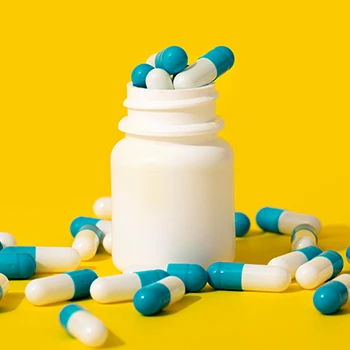
As per a study by WebMed, nootropics, also referred to as “cognitive enhancers” or “smart drugs,” can help improve focus and allow you to push through intense exercise [9].
Interestingly, a study from the National Center of Biotechnological Information shows that creatine, known for increasing muscle growth, also has cognitive benefits [10].
Other nootropic supplements to look for are choline, alpha-GPC, and lion’s mane.
4. Promotes Working Out Any Time of Day
Let’s face it, not all of us thrive in the morning, including working out. Other times, our schedules may force us to work out later in the day.
With non-stim pre-workout, you don’t have to worry about what time of day you exercise and have trouble sleeping.
4 Best Stimulant Ingredients

Again, caffeine is the most common energy-boosting ingredient in stimulant pre-workouts. Let’s look closely at other stimulants you may find on the pre-workout label.
1. Guarana
Guarana comes from the seeds of a South American tree that researchers once thought the stimulant effects came from a chemical that was specific to that tree, but they learned that Guarana has a high concentration of caffeine, containing up to 3.6% to 5.8% caffeine by weight.
Coffee only has up to 2%.
2. Theobromine
Theobromine is a stimulant and bronchodilator found in chocolate.
According to ScienceDirect, the primary benefit of theobromine is its bronchodilator properties, which will increase lung capacity, making breathing easier during exercise [11].
3. Green Tea Extract
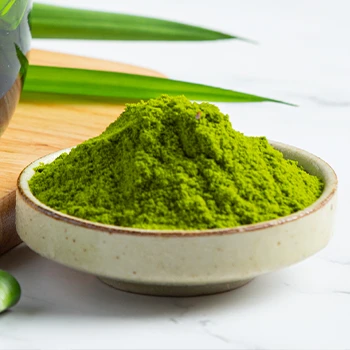
According to LiveStrong, green tea extract offers the same benefits as caffeine, like suppressing appetite, increasing workout intensity, and reducing stress [12].
Because green tea extract as a pre-workout contains caffeine. When reading the label, you should take note of all the caffeine content in a serving; it adds up quickly.
4. Yohimbe
Yohimbe is the chemical found in the bark of the Yohimbe tree, an evergreen native to Africa. As per WebMed, Yohimbe as a pre-workout is best known for its aphrodisiac properties [13].
Using Yohimbe for fat loss stimulates the body’s “fight or flight” system, which releases adrenaline (epinephrine) and noradrenaline (norepinephrine).
According to NIH, the release of these chemicals makes you more alert, raises body temperature, and increases blood pressure, leading to increased fat burning [14].
Keep in mind, in addition to stimulants, many of the best non-stim ingredients we talk about next can and should be found in stimulant pre-workouts for their benefits to muscle pump, recovery, muscular endurance, and blood flow.
6 Best Non-Stim Ingredients

Without the benefits of stimulants, you should look for the following ingredients in non-stimulant pre-workout formulas.
1. Creatine
Creatine offers a lot of value as a pre-workout ingredient. Though there has long been a question about its safety, research shows it is not only safe but effective and popular as a pre-workout supplement.
Research from HealthLine shows creatine may [15]:
- Help muscle cells produce more energy.
- Promote muscle mass
- Improve high-intensity exercise performance
- Improve brain function
- Reduce fatigue
“Supplementing with creatine provides additional ATP energy, which improves high-intensity exercise performance.” -Rudy Mawer, MSc, CISSN.
2. Citrulline
Citrulline enhances nitric oxide production. Nitric oxide is a vasodilator, allowing more oxygen and nutrients to get to the muscles.
HealthLine notes that more oxygen means better muscle pumps, lower blood pressure, and reduced muscle soreness, which boosts exercise performance [16].
3. Glycerol
Glycerol, like citrulline, according to NIH, can also promote muscle pumps but does so by flooding your muscles with water and is found to benefit both aerobic and anaerobic exercise [17].
4. BCAAs
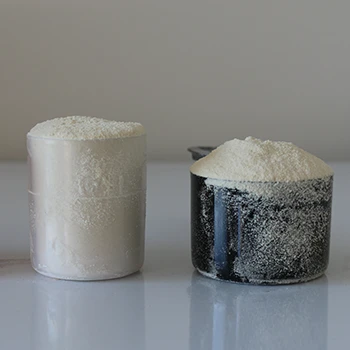
The three branched-chain amino acids are leucine, isoleucine, and valine. According to the National Center of Biotechnological Information, BCAAs for pre-workout is essential for muscle growth and recovery, reduce fatigue and prevent muscle breakdown [18].
5. Betaine
Betaine derived from beets is a popular pre-workout supplement addition because research from NIH shows it improves body composition and increases muscles, work capacity, and power [19].
6. Beta-alanine
Beta-alanine may promote the production of carnosine in the muscles. Research by WebMed shows that higher carnosine levels may boost athletic performance by increasing muscular stamina and delaying fatigue [20].
Does Stim-Free Pre-Workout Work?
Yes, stimulant-free pre-workout can work to enhance athletic performance because they may still improve focus and boost energy; they just take a different avenue to do so than caffeine.
A formula of ingredients that will potentially increase energy levels, improve blood flow, and allow you to push longer without stimulating your central nervous system can work for many people who prefer not to consume stimulants or are sensitive to stimulants.
Stimulant-free pre-workout supplements often contain ingredients like citrulline, beta-alanine, nitric oxide boosters, and branched-chain amino acids (BCAAs).
These components support improved blood flow, muscle endurance, and recovery, providing a natural boost to your workout without stimulants.
Adaptogens in Non-Stim Pre-Workouts
Many non-stim pre-workouts may benefit from the inclusion of adaptogens, which are natural substances that help the body resist stressors of all kinds, whether physical, chemical, or biological.
These could include herbs like Rhodiola Rosea or Ashwagandha, which have been shown in a study by ScienceDirect to improve endurance and reduce fatigue without the use of stimulants [21].
Long-Term Effects of Stim vs. Non-Stim Pre-Workouts
Stim Pre-Workouts
Regular consumption of stimulants in pre-workout supplements can have under-discussed long-term effects on an individual's health and fitness journey.
Chronic use of stimulants, such as caffeine and other energy-boosting compounds, can lead to adverse consequences. Prolonged exposure may result in adrenal fatigue, a condition where the adrenal glands become overworked, potentially causing a decrease in natural energy production.
Moreover, individuals may develop increased tolerance to stimulants, requiring higher doses to achieve the same performance-enhancing effects. This can potentially lead to a vicious cycle of escalating stimulant intake, with potential risks to one's overall well-being.
Non-Stim Pre-Workouts
Non-stimulant alternatives, such as adaptogens, nitric oxide boosters, or amino acids, can offer sustainable performance enhancements without the drawbacks of adrenal fatigue and increased tolerance.
These options work in different ways to improve endurance, focus, and muscle pump, ensuring that individuals can continue to perform at their best without the need for escalating stimulant doses and associated health risks.
FAQs
Should I Cycle Off Stimulant-Free Pre-Workout?
You should cycle off stimulant-free pre-workouts, which holds true for any supplement because, over time, your body adapts to the ingredients, and the pre-workout may lose effectiveness.
How Long Does Non-Stimulant Pre-Workout Last?
How long non-stimulant pre-workout lasts depends on the ingredients, but most effects last two or three hours after consumption.
References:
- https://www.cancer.gov/publications/dictionaries/cancer-terms/def/central-nervous-system-stimulant
- https://jissn.biomedcentral.com/articles/10.1186/s12970-020-00383-4
- https://www.sciencedaily.com/releases/2021/12/211201085155.htm
- https://pubmed.ncbi.nlm.nih.gov/30335479/
- https://pubmed.ncbi.nlm.nih.gov/10584049/
- https://www.healthline.com/nutrition/10-natural-appetite-suppressants
- https://www.healthline.com/nutrition/caffeine-crash
- https://www.ncbi.nlm.nih.gov/pmc/articles/PMC4666933/
- https://www.webmd.com/vitamins-and-supplements/features/nootropics-smart-drugs-overview
- https://www.ncbi.nlm.nih.gov/pmc/articles/PMC6093191/
- https://www.sciencedirect.com/topics/medicine-and-dentistry/theobromine
- https://www.livestrong.com/article/401200-will-green-tea-before-a-workout-burn-more-fat/
- https://www.webmd.com/vitamins/ai/ingredientmono-759/yohimbe
- https://pubmed.ncbi.nlm.nih.gov/17214405/
- https://www.healthline.com/nutrition/10-benefits-of-creatine
- https://www.healthline.com/nutrition/nitric-oxide-supplements
- https://www.ncbi.nlm.nih.gov/pmc/articles/PMC3590833/
- https://www.ncbi.nlm.nih.gov/pmc/articles/PMC6212987/
- https://www.ncbi.nlm.nih.gov/pmc/articles/PMC3844502/
- https://www.webmd.com/vitamins-and-supplements/beta-alanine-uses-and-risks
- https://www.sciencedirect.com/science/article/pii/S2772632023000181
About The Author
You May Also Like
